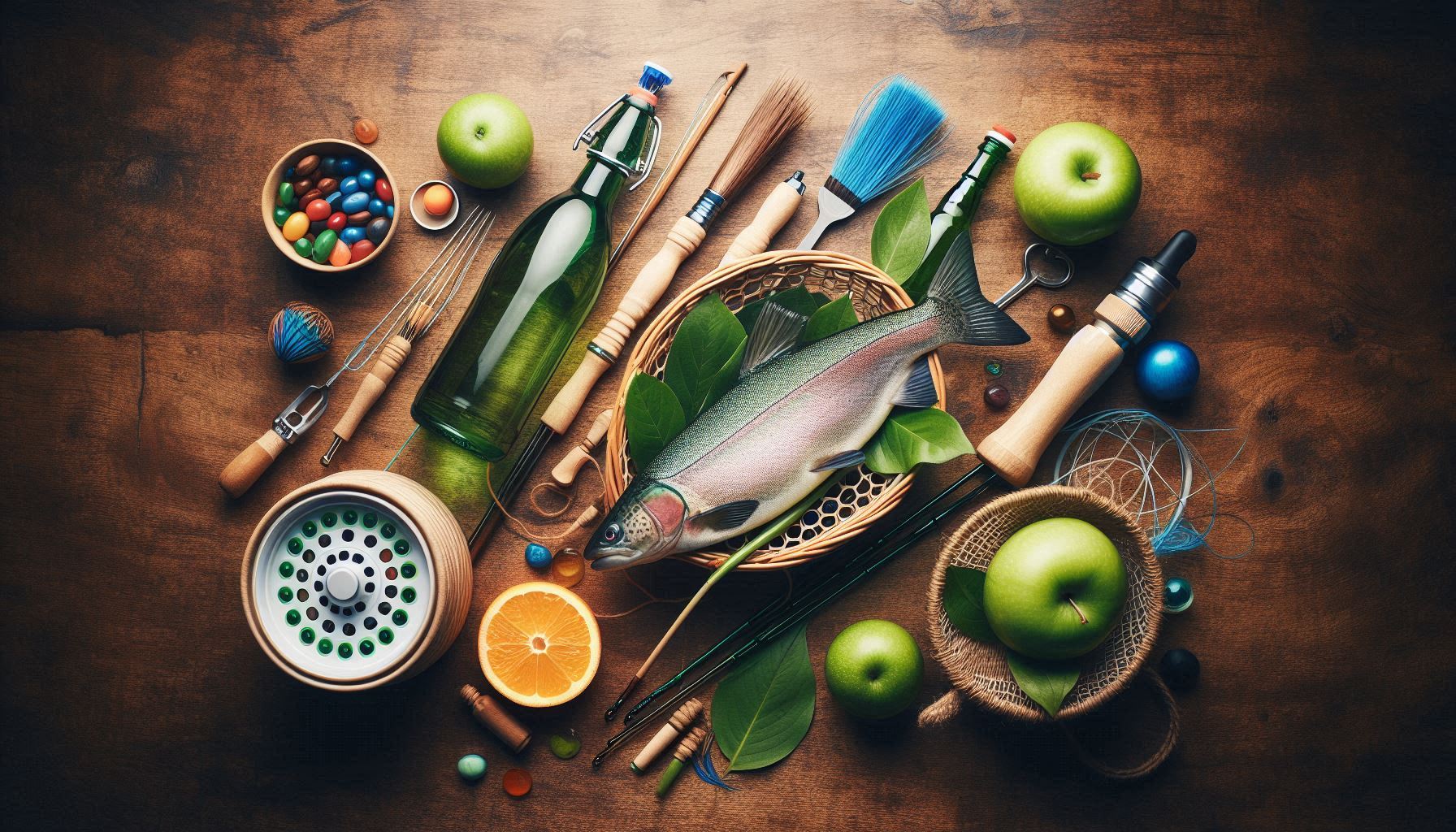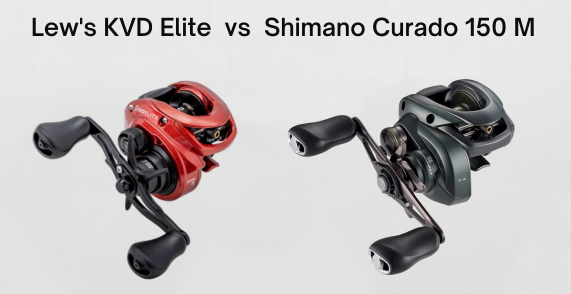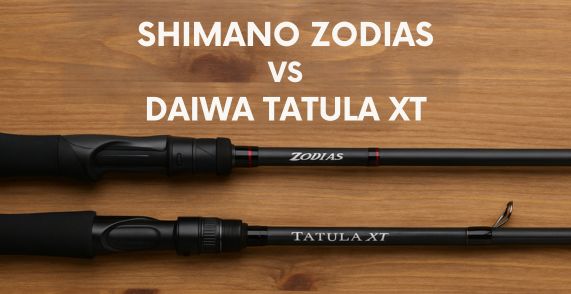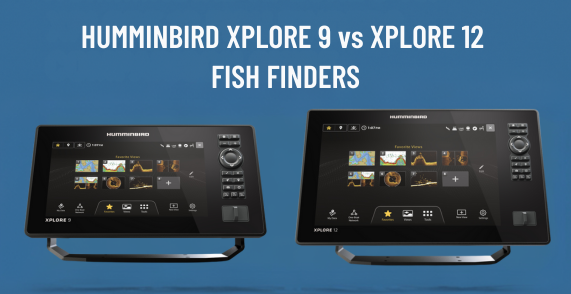In This Post
- 1 Key Takeaways
- 2 Plastic-Free Waters: How Sustainable Fly Fishing Protects the Places You Fish
- 3 Sustainable Rods and Reels That Don’t Sacrifice Performance
- 4 Biodegradable Lines That Won’t Haunt Waters for Centuries
- 5 PFAS-Free Waders and Responsible Apparel
- 6 Small Items, Big Impact: Accessories That Make a Difference
- 7 Sustainable Eyewear and Apparel: Protection With Purpose
- 8 Conservation in Action: Repair Programs and Habitat Restoration
- 9 Eco-Friendly Line Care and Maintenance Products
- 10 Making Informed Eco-Friendly Purchases
- 11 The Bigger Picture: Why Your Choices Matter
- 12 Cast with a Clear Conscience
Key Takeaways
- Eco-friendly fly fishing gear now matches or exceeds the performance of traditional options, with innovations like PVC-free fly lines that last longer and biodegradable tippet that breaks down in 5-7 years instead of centuries.
- Recycled materials are transforming the industry, from Guideline’s NOVA reels made entirely from recycled aluminum to Patagonia’s waders constructed with fabric from reclaimed fishing nets.
- Choosing PFAS-free waders and non-toxic tungsten weights directly protects the waters you fish, preventing harmful chemicals from contaminating aquatic ecosystems.
- Bamboo fly rods offer a natural, renewable alternative with unique action and feel while requiring significantly less energy to produce than carbon fiber options.
Plastic-Free Waters: How Sustainable Fly Fishing Protects the Places You Fish
The pristine rivers we love to fish face growing threats from the very equipment we use to enjoy them. As an angler who values both performance and environmental responsibility, I’ve watched sustainable fly fishing gear grow from niche products to high-performance equipment that often outperforms traditional options.
This post showcases how these eco-friendly innovations help protect our beloved waterways while delivering exceptional results on the water.
Today’s green fishing gear no longer forces you to choose between environmental values and fishing effectiveness. From biodegradable tippet to recycled reels, these advancements let you pursue your passion while minimizing your footprint on the places you fish.
Sustainable Rods and Reels That Don’t Sacrifice Performance
1. Recycled Aluminum Reels with Superior Drag Systems
Guideline’s NOVA reel stands as the world’s first recycled fly reel, constructed entirely from recycled raw materials.
This groundbreaking design eliminates single-use plastics completely, with cases made from recycled 600D fabric and tubes from recyclable polypropylene.
Despite its eco-friendly composition, the NOVA delivers smooth, consistent pressure during fights with powerful fish thanks to its optimized carbon drag system.
What makes this approach remarkable is how the environmental benefits come with performance advantages.
The recycled aluminum construction maintains consistent weight while providing superior corrosion resistance compared to many traditional options – a perfect example of sustainability driving innovation rather than limiting it.
2. Bamboo: Nature’s Renewable Rod Material
Bamboo fly rods connect anglers to a sustainable tradition with modern benefits. As one of nature’s fastest-growing plants, bamboo produces 35% more oxygen than equivalent trees while requiring minimal water and no pesticides.
The natural properties of bamboo create a distinctive casting action with exceptional sensitivity that many anglers prefer for delicate presentations.
I’ve found bamboo rods particularly shine on small streams where their progressive, smooth flex loads naturally during shorter casts.
While they require more maintenance than synthetic materials, the unique fishing experience and environmental benefits make bamboo compelling for anglers seeking connection with traditional craftsmanship and sustainable materials.
3. Low-Toxic Finishes and Bio-Based Epoxies
Modern rod manufacturing is using safer materials beyond just blank construction. Guideline’s Elevation series utilizes bio-based, low-toxic epoxies that significantly reduce harmful chemical exposure for both production workers and the environment.
These rods feature a matte, lightly buffed finish without added colorants, eliminating unnecessary chemical applications.
Even small components reflect environmental consciousness. The guides feature a gun smoke powder coat finish instead of traditional chrome plating, which often contains toxic lead.
The reel seat undergoes a “clear anodizing” process as the least toxic method for finishing aluminum, completely avoiding chrome or paint in the anodizing bath.
Biodegradable Lines That Won’t Haunt Waters for Centuries
1. Biotip and Tuf Line: From 600+ Years to 5-7 Year Decomposition
Lost fishing line creates one of fly fishing’s most persistent environmental problems. Traditional monofilament and fluorocarbon lines can take over 600 years to decompose, creating lasting hazards for wildlife.
Biotip offers a practical solution with 100% biodegradable monofilament tippet that breaks down in water and soil within just 5-7 years.
This eco-friendly tippet maintains comparable strength to conventional options and holds up well for 18-24 months on your reel. Even the packaging and spool are completely biodegradable.
Tuf Line provides another option with their plant-based polymer monofilament that retains full strength for a year after spooling while decomposing into harmless biomass if lost.
2. PVC-Free Alternatives That Outcast Traditional Lines
Conventional fly lines contain PVC coatings that release harmful chemicals as they degrade. PVC-free fly lines eliminate these toxic compounds while delivering superior performance.
Monic fly lines feature a PVC-free composition providing exceptional durability, low memory, and unparalleled buoyancy for better line management and more accurate casts.
Without PVC, these lines resist the cracking and performance degradation seen in traditional lines as they age. I’ve found they typically last 2-3 times longer than conventional options, making them both an environmentally and economically sound choice that actually improves your fishing experience.
3. Recycling Programs Giving Old Lines New Life
The industry is establishing comprehensive recycling solutions for existing line waste.
The Airflo Zero Waste Box™ Recycling Program accepts virtually any fishing line type—including fly line, fluorocarbon, copolymer, and nylon—along with plastic spools and packaging materials, ensuring these plastics are diverted from landfills and waterways.
Creative upcycling offers another approach to line waste. Flyvines hand-braids discarded fly line into functional accessories like lanyards, bracelets, and eyewear retainers.
This innovative repurposing prevents used fly line from impacting the environment while creating stylish, durable products that continue to serve anglers in a new form.
PFAS-Free Waders and Responsible Apparel
NetPlus and Recycled Materials: Transforming Ocean Waste into Gear
Waders form a critical interface between you and the water, making their eco-friendly design particularly important.
Traditional models often contain PFAS (per- and polyfluoroalkyl substances) – chemicals that persist in the environment and cause serious ecological damage when they leach into waterways.
Several manufacturers now offer excellent PFAS-free alternatives. Patagonia’s Swiftcurrent waders feature 100% PFAS-free construction while utilizing recycled polyester in their H2No Performance Standard laminate.
I’ve found these waders maintain exceptional waterproofing and durability without the environmental compromise. They’re designed to last through multiple seasons of heavy use, reducing the need for frequent replacements.
Guideline’s Laxa 2.0 waders take a different approach, using bluesign-approved fabrics with PFAS-free DWR treatment. The bluesign certification guarantees materials meet strict environmental standards while minimizing harmful chemicals throughout production.
The most innovative material advancement might be Patagonia’s NetPlus fabric – made entirely from recycled fishing nets collected worldwide.
This initiative diverts hundreds of tons of plastic from oceans annually while creating durable, high-performance gear. The transformation of harmful waste into fishing equipment creates a beneficial cycle that directly improves the waters we fish.
Fair Trade Certified Production: Protecting People and Planet
Environmental responsibility extends beyond materials to include the human element of production. Patagonia leads this movement with over 90% of its product line manufactured in Fair Trade Certified factories.
Their program pays a premium directly to factory workers, who democratically control funds for their collective benefit, positively impacting over 85,000 workers globally.
Orvis maintains comprehensive ethical standards throughout their supply chain, prohibiting forced and child labor while ensuring fair compensation and safe working environments.
This holistic approach recognizes that true sustainability encompasses both environmental and social responsibility.
Small Items, Big Impact: Accessories That Make a Difference
1. Fly Boxes Made From Recycled Fishing Nets
Even small items like fly boxes can make a significant environmental difference. Salmologic’s eco fly boxes exemplify this approach, manufactured from 100% recycled PP material collected in northern Denmark.
Their green variants are made from recycled fishing nets recovered from local beaches, transforming ocean pollutants into practical fishing accessories that perform as well as conventional options.
Fishpond committed to using 100% recycled plastic for all their fly boxes starting in 2021. Their boxes maintain the durability and functionality anglers expect while significantly reducing virgin plastic demand.
The American Fly Fishing Trade Association (AFFTA) offers another alternative with their fiber-based fly box that’s 100% curbside recyclable yet securely holds flies of various sizes.
2. Tungsten Weights: The Non-Toxic Alternative to Lead
Lead weights pose serious environmental concerns when lost in waterways, slowly dissolving and poisoning fish, birds, and other wildlife. Tungsten provides an excellent non-toxic alternative that actually improves your fishing.
Loon’s Deep Soft Weight uses environmentally safe tungsten-based materials that offer more weight in a smaller profile.
Tungsten is 30% denser than lead, allowing you to use smaller weights that create less water disturbance for more natural presentations. This versatile putty weight lets you easily adjust depth and can even serve as a temporary bead head for nymphs when you need to adapt on the water.
3. Plastic-Free Packaging Initiatives
Packaging waste contributes significantly to environmental pollution, but leading brands are actively addressing this issue.
Orvis champions their “Kick Plastic” campaign, eliminating single-use plastics while maintaining strong recycling programs. They’re systematically evolving their packaging to be biodegradable, recyclable, and ultimately plastic-free.
RIO Products has developed 100% biodegradable, molded fiber fly line spoolers that completely dissolve if accidentally dropped in water. This award-winning innovation prevents plastic pollution from a commonly lost item without sacrificing functionality or protection for the line itself.
Guideline uses recycled paper for packaging and designs it as compact as possible, reducing material use and shipping size for a lower carbon footprint.
DRYFT Fishing is phasing out all single-use plastic packaging, moving exclusively to recycled, reusable, or recyclable materials for everything they ship.
Sustainable Eyewear and Apparel: Protection With Purpose
Protecting your eyes on the water is essential, and now you can do so with environmentally responsible eyewear. Waterhaul crafts ocean-positive sunglasses entirely from recycled fishing gear, featuring 100% recycled frames with zero virgin plastic.
These glasses utilize mineral glass lenses and saltwater-resistant components specifically designed for fishing while supporting ghost gear recovery efforts.
Their frames maintain exceptional durability despite their recycled origin – each pair comes with a lifetime warranty, ensuring they’re the last sunglasses you’ll need to purchase.
Ugly Fish’s Green Series takes a similar approach, manufacturing polarized sunglasses from recycled fishing nets while maintaining the rugged performance needed for long days on the water.
Hemp materials offer remarkable sustainability benefits for fishing apparel. This versatile plant requires minimal irrigation and fertilizer while replenishing soil nutrients and preventing erosion.
Hemp fabric naturally resists UV damage, mold, and mildew – ideal properties for gear that gets wet regularly.
Patagonia’s Fly Catcher Hat showcases this integrated approach to sustainable materials, featuring organic cotton construction with a brim made from NetPlus recycled fishing nets.
The front patch doubles as a practical place to store flies while the adjustable design ensures proper fit through long days on the water.
Conservation in Action: Repair Programs and Habitat Restoration
The fly fishing industry goes beyond creating sustainable products by taking direct action to protect and restore the ecosystems that support our sport.
The most environmentally friendly product is often the one you already own, and several companies have established strong repair services to extend gear life.
Orvis has repaired products for snags and tears since 1856, actively reducing waste as part of their customer satisfaction guarantee.
Simms designs its equipment for repairability and offers comprehensive services that contribute to product longevity. Their wader repair program can add years to your gear’s useful life, saving money while keeping functional items out of landfills.
Many brands directly support habitat protection through formal conservation programs. DRYFT plants a tree with every wader sold, focusing on salmon and steelhead streams in the Pacific Northwest.
This partnership with One Tree Planted helps restore critical riparian habitat that maintains the cool, clean water essential for healthy fisheries.
Daiwa’s Line Recycling Project aims to recycle 150,000 kilometers of fishing line within five years through participating tackle stores.
OzFish Unlimited’s Tackle Loop program provides a convenient way to recycle old fishing gear through their reply-paid postal service, ensuring materials are repurposed or refurbished rather than discarded.
Eco-Friendly Line Care and Maintenance Products
Even the maintenance products you use can have environmental benefits when chosen carefully. Scientific Anglers’ Rinse-Free Fly Line Cleaner features a biodegradable formula specifically designed for modern fly lines.
This cleaner effectively removes embedded dirt that causes lines to sink while extending their longevity, all without introducing additional harmful chemicals into waterways.
High N Dry Fishing Products offers floatants explicitly designed to be “ecologically safe” while maintaining excellent performance across diverse fishing conditions.
These products help your dry flies float perfectly without leaving harmful residues in the water. The shift toward biodegradable and non-toxic maintenance products represents another way manufacturers are reducing the sport’s environmental footprint.
Making Informed Eco-Friendly Purchases
Balancing Performance, Durability, and Sustainability
When selecting eco-friendly fly fishing gear, I consider three key factors: environmental impact, performance, and durability.
The most sustainable option is often gear that performs well and lasts for many seasons, reducing the need for frequent replacements even if its eco-credentials aren’t perfect.
Many sustainable options now match or exceed the performance of traditional gear. Monic’s PVC-free fly lines offer superior durability and lower memory than conventional lines, making them both environmentally and functionally superior.
They typically last 2-3 times longer than traditional PVC lines because they don’t suffer from the chemical leaching and cracking that degrade conventional lines over time.
Durability significantly impacts overall environmental footprint. A product that lasts twice as long effectively halves its lifetime environmental impact.
Many reputable brands stand behind their products with extended warranties – Orvis offers a 25-year guarantee on many rod models, demonstrating confidence in their longevity and commitment to keeping functional products in use.
Look for Credible Certifications
With so many “green” marketing claims, third-party certifications provide valuable verification. Here are the most meaningful standards to look for:
- B Corporation (B-Corp): Certifies companies meeting high standards of verified social and environmental performance. Fishpond was the first fly fishing business to become a certified B-Corp, and Mayfly Outdoors (parent company of Abel, Airflo, and Ross) has also earned this distinction.
- bluesign®: Guarantees textile materials are manufactured with strict environmental standards, minimizing harmful chemicals while conserving resources. Guideline and Patagonia use bluesign-certified materials extensively in their waders and apparel.
- Fair Trade Certified™: Ensures ethical labor practices, fair wages, and safe working conditions throughout the supply chain. Patagonia manufactures over 90% of its line in Fair Trade Certified factories, directly benefiting over 85,000 workers globally.
- OEKO-TEX®: Certifies textiles are manufactured to minimize harmful chemicals and promote worker safety, particularly important for waders and clothing that contact your skin directly.
These certifications provide assurance that sustainability claims have been independently verified, making them more reliable than unsubstantiated marketing language.
Community Insights and Reviews
I’ve found the collective wisdom of the fly fishing community invaluable when evaluating sustainable gear. Independent reviews from publications like GearJunkie and Field & Stream often evaluate both performance and environmental features.
Online forums provide real-world experiences from fellow anglers who have tested products in diverse conditions.
For example, user discussions about biodegradable tippet often note that while Biotip performs excellently in most situations, it can be slightly thicker and stiffer than conventional tippet of the same X-rating.
This kind of specific feedback helps set realistic expectations and identify the right tool for particular fishing scenarios.
The Bigger Picture: Why Your Choices Matter
The Cumulative Impact of Individual Choices
While one angler’s gear choices might seem insignificant globally, the collective impact of the fly fishing community is substantial.
With millions of anglers worldwide, shifts in purchasing patterns drive significant industry change. When consumers consistently choose eco-friendly options, manufacturers respond by developing more sustainable products and improving existing ones.
This market influence has already transformed the industry. Just a decade ago, finding PFAS-free waders or biodegradable tippet was nearly impossible.
Today, these products are readily available from multiple manufacturers because anglers demanded better environmental options.
The Connection Between Healthy Waters and Healthy Sport
The future of fly fishing fundamentally depends on the health of aquatic ecosystems. Climate change, pollution, and habitat degradation directly threaten the waters we fish and the species we target.
By choosing gear that minimizes environmental harm, you help protect the very resources that make fly fishing possible.
This connection creates a powerful alignment between self-interest and environmental stewardship.
The same choices that preserve fisheries for future generations also enhance your current fishing experiences by protecting water quality, fish health, and habitat integrity.
Supporting Industry Innovation
Purchasing eco-friendly gear directly supports the companies pioneering sustainable innovations. This financial validation encourages continued research and development into even better environmental solutions.
The recycled aluminum in Guideline’s NOVA reels, the biodegradable polymer in Biotip tippet, and the NetPlus fabric in Patagonia’s waders all represent significant R&D investments that required market support to become viable.
As more anglers prioritize sustainability, we can expect further innovations that push the boundaries of what’s possible in creating high-performance gear with minimal environmental impact.
Your purchases become investments in this ongoing evolution toward more responsible fly fishing.
Cast with a Clear Conscience
Today’s eco-friendly gear options perform exceptionally well while allowing you to align your passion with your environmental values. From recycled reels and bamboo rods to biodegradable tippet and PFAS-free waders, responsible choices exist across every category of equipment.
By selecting gear that minimizes environmental impact, extending equipment life through proper care, and supporting conservation-minded brands, you become part of the solution rather than the problem.
These choices help preserve the pristine waters and thriving fish populations that make fly fishing such a rewarding pursuit.
The next time you’re on the water, casting with gear that reflects your environmental values, you’ll experience the deeper satisfaction that comes from knowing your equipment choices are protecting the places you love to fish.
This harmony between passion and principle represents fly fishing at its best—a pursuit that connects us to nature while inspiring us to protect it.
Fishing Zenith is dedicated to helping anglers find sustainable gear that enhances their experience while protecting the waters we all cherish.







